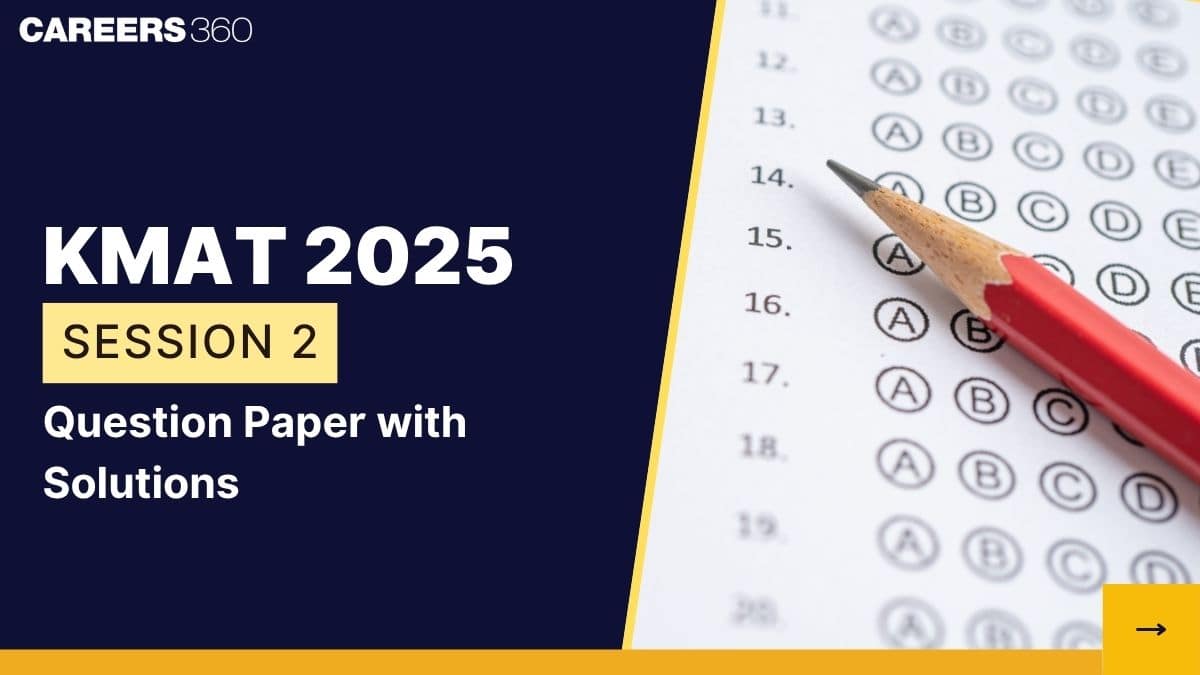KMAT 2025 Kerala Session 2 Analysis: English Language Usage and Reading Comprehension
Difficulty Level: Easy
The English section in KMAT 2025 Kerala Session 2 was easy and straightforward, making it highly scoring for most test-takers.
Vocabulary-based questions included synonyms, antonyms, and identification of correctly spelt words.
Grammar questions tested understanding of prepositions, sentence structures, direct and indirect speech, and types of sentences.
Parajumbles and sentence rearrangement questions were present, focusing on logical sequencing.
Idioms and phrases, active and passive voice, and fill-in-the-blank questions featured in moderate numbers.
Reading Comprehension passages were short and to the point, with direct and factual questions.
Overall, this section was time-efficient and allowed most candidates to attempt nearly all questions with confidence.
KMAT 2025 Kerala Session 2 Analysis: Quantitative Aptitude
Difficulty Level: Moderate
The Quantitative Aptitude section in KMAT Kerala 2025 Session 2 featured a moderate mix of concept-based and application-driven questions.
Questions on simple and compound interest were among the easiest in the section, directly based on formulae.
Ratio and proportion problems were prominently featured, covering both theoretical and practical applications.
The number system questions, particularly involving fractions and basic arithmetic operations, appeared but were not dominant.
Several questions tested efficiency in solving time and work problems, requiring methodical approaches.
Concepts of proportionality were interlinked with other topics such as mixtures and partnerships.
A noticeable portion of the section focused on percentage-based problems, testing real-life applications like discounts and markups.
Additional topics included arithmetico-geometric progressions and sequences, which added conceptual depth.
There were a few questions from profit and loss, involving simple application of formulas and real-world scenarios.
Overall, the section rewarded candidates with strong fundamentals and regular quantitative practice.
KMAT 2025 Kerala Session 2 Analysis: Data Sufficiency and Logical Reasoning
Difficulty Level: Moderate
The Logical Reasoning and Data Sufficiency section in KMAT Kerala 2025 May Session involved a moderate mix of verbal and analytical reasoning questions.
Questions on arrangement problems, both circular and linear, required careful attention to positions and conditions.
Coding and decoding problems tested the ability to recognize and apply symbol/letter transformation rules.
Short puzzles, including distribution and scheduling-based problems, were present and required quick logical deductions.
The section featured statement and effect type questions, assessing cause-effect comprehension.
Direction-sense test questions challenged spatial reasoning and orientation logic.
Word or sentence arrangement problems required candidates to order given words or phrases in a logical or meaningful sequence.
Questions on blood relations involved decoding family hierarchies and mapping relational links.
The data sufficiency part required analyzing whether one or both statements provided adequate information to answer the question.
Critical reasoning areas included statement and assumption, as well as strong and weak argument evaluation.
A few analogy-based questions tested the ability to identify relationships and complete pattern-based analogies.
The section as a whole required sharp analytical skills and a balanced approach between speed and accuracy.
KMAT 2025 Kerala Session 2 Analysis: General Knowledge and Current Affairs
Difficulty Level: Moderate
The General Knowledge section mainly tested static GK, making foundational knowledge crucial for KMAT Kerala 2025.
Many questions focused on notable books and their authors, emphasizing literary familiarity.
Indian Geography was well-covered, including questions on states, capitals, and geographical features.
A fair number of questions revolved around abbreviations and full forms of important organizations.
Awareness of various national and international organizations was regularly assessed.
Word association questions appeared, challenging candidates to identify related concepts effectively.
Current affairs had a minimal presence, highlighting the need for strong static GK preparation.
Aspirants who consistently revised static GK topics had an advantage in this section.

